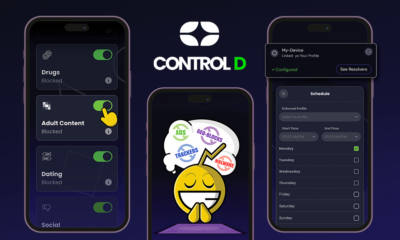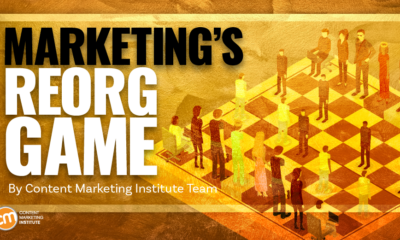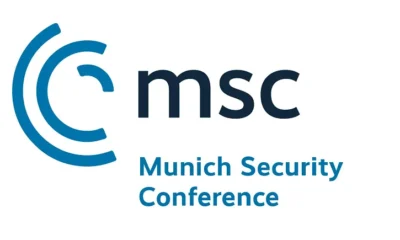SEO
Legal Considerations & Team Communication For Remote Companies

So, you’ve likely figured out that remote work is here to stay, which means a whole set of different considerations when getting set up.
In the first part of this series on how to build a remote SEO team, we looked into the structure of successful remote teams.
Now, let’s explore the legal considerations and team communication aspects you’ll need to build a remote team, stay compliant, and encourage collaboration.
Legal Aspects of Remote SEO Teams
Salary and benefits are not the only aspects of hiring fully-remote SEO experts with legal implications.
Depending on your team’s base, you may need to make extra considerations around rights and security.
Data Security
Employees working fully remotely may not only be working from their homes.
They may use the flexibility of not being in an office to take working holidays for weeks at a time or simply go to the coffee shop down the road to work.
Because of this, there are extra data security complications.
Confidential Data
In an ideal situation, each team member would have their own private, lockable space to work.
An office outside of the company office.
However, this is a rarity.
Therefore, remote workers must be mindful of who can access their working space or see what they are working on.
Working in a co-working space or a café can mean that other people may see screens with confidential client data or company financial data.
You may need to invest in films for laptop screens that make it harder for other people to read unless directly in front of them.
You may also need to recommend that your team be mindful of the data they leave visible on their screens around other people.
Data Protection Laws
It might not just be a case of wanting to keep client and personal data safe. There might be legal ramifications if you don’t.
In Europe, for example, the General Data Protection Regulation (GDPR) governs employees and stipulates how to treat personally identifiable data.
You’ll need to adapt processes and rules around data security to life outside of the office for remote teams.
The team also needs to be educated on its importance and have the tools to assess their own work environment.
Guidance For Shared Living Spaces
Working full-time from home can lead to lapses in treating work equipment and data differently from personal equipment.
It might be second nature for an employee in an office to lock their laptop when they get up from their desk. But in the comfort and security of their own homes, it might not occur to them to do the same.
Think too, that in an office, most people around work for the same company.
This is not the case in shared living spaces.
It can be a good idea to remind your team of that.
Guidance For Vacated Premises
Hybrid or in-office employees may leave their laptops at work when they go on holiday.
The office is likely to be staffed when they are not there, or in periods of shutdown such as over bank holidays, the office will be securely locked.
There may be times when a colleague’s house, therefore home office, is completely vacant, like when they and their family go on holiday.
Remote workers may need to lock away their company laptops during these times as an extra level of security.
You may need to provide them with the facilities, like a lockable cabinet.
Legal Rights
The legal employment rights of your SEO team may be very different depending on where in the world they are working from.
If all of your team are fully remote but in your state/country, you may not need to consider it as much.
This can affect a lot, for example:
- The number of public holidays.
- The amount of paid sick leave.
- How much maternity leave?
- The length of notice they are legally entitled to when terminating their contract.
Even if you are not ultimately legally responsible for this area, as a line manager building a fully-remote team, it is wise for you to understand what each member of your team is entitled to.
This will help you plan for cover during holidays, paternity leave, and cases of sickness.
It can also mean you are not accidentally leaving a single team member responsible for the technical health of an entire website when everyone but themselves is on a public holiday.
Optimizing Your Remote Team’s Communication & Collaboration
Once you get past the initial financial and legal hurdles for building a fully-remote SEO team, you can turn your attention to how to make it a fun, productive, and energizing work experience.
Communication
One of the biggest perceived challenges for a fully-remote team is communication.
Many teams struggle to find the right balance between over and under-communicating.
Getting communication right in a fully-remote SEO team is a particularly big priority.
As SEO pros, we often learn from each other, discussing challenges and considering ideas as a team.
A large component of the job for digital PR is ideation, arguably much easier as a group.
Just because your team is fully remote does not mean you have to lose that side of the communication.
Replacing Office Chit Chat
When talking about fully remote versus in-office, the topics often surround the pros and cons and the ease of chatting.
Some people love the buzz of a busy office and the opportunity to connect with colleagues while preparing lunch, or making a coffee.
Others find it distracting or draining to be available to other people constantly.
When discussing the social and community needs of a remote SEO team, it’s important to realize we’re not looking to replicate the office chit-chat but instead replace it.
The goal is to give your team the time for deep-work focus and the opportunity to connect with their colleagues.
One way of doing this is through set times for socializing.
You can set up optional coffee chats once a week or every day so that the whole team can come together for 15 minutes of social chat.
They may want to do this as a whole team or one on one.
This might branch out across the company, so your team gets the opportunity to connect with others that they don’t work with daily.
This way, you can protect their focus and time while enabling them to make space for the social aspect of work.
Video Call Fatigue
In the Covid-19 working from home movement, something that became apparent early on was that in-office meetings quickly got replaced with double the number of meetings via video calls.
This can be completely exhausting and time-consuming.
Be mindful of how you enable your team to structure their days.
Consider call-free hours or days, suggest switching to voice only for some/most calls, or even give people the opportunity to use an avatar for some calls.
Those meetings that could have been an email? Still could have been an email.
Don’t try to foster relationships and teamwork through video calls. It isn’t the way to do it.
Just like in-person meetings need to be arranged mindfully, so do virtual ones.
Instant Message Overload
Working remotely makes it harder for you to call across the office to ask your team member for an update or check that they are OK.
Losing this aspect of working isn’t necessarily a bad thing.
Just because you are in a state where you are ready for an update doesn’t mean you are not interrupting your team member and potentially derailing their concentration.
Let’s not use instant messengers in the same way.
Be thoughtful around how you message people using Slack, Teams, and the various other instant messengers.
Don’t expect an answer from your team straightaway.
You can’t see the look of concentration on their face as they are writing schema or the fact that they are actually making a cup of tea at the time.
Try not to phrase messages with a sense of expectancy for a quick answer.
For longer brain dumps, consider sending your thoughts in an email and use the instant messengers for shorter updates.
One good tip for ensuring your team doesn’t feel obligated to respond instantly is cutting straight to the chase.
Starting a conversation only asking “hi, how are you?” can cause your addressee to feel obligated to answer immediately to find out what you need and how urgent it is.
Instead, if you tell them exactly what you’re after and when you need it, you save them the guesswork or need to reply instantly.
Losing Messages In The Noise
Another risk of fully-remote work is that there is little to distinguish between “this is an important announcement I need to pay attention to and remember” and “this is a status update of lesser importance.”
When your team is receiving hundreds of messages a day from across the company, they may simply miss the one from you asking for them to look at a page that’s 404ing.
Consider setting different channels for social chat, projects, and urgent announcements.
This categorization of messages can help the team to identify how urgent/important the communication is and also find it again a few days (and hundreds of messages) later.
Collaboration
Making sure your team can function as well as any in-office SEO team will be all down to how well they can collaborate remotely.
Several factors impact how you should set your team up for successful collaboration.
Timezones
Your remote team might have people operating in different time zones.
Truly international teams might not have much, if any, overlap of working hours.
This can be very hard to navigate successfully.
There can be the temptation, especially for agencies, to expect SEO experts to be available whenever they need them.
If clients are in different time zones and colleagues, you can guess whose schedule gets prioritized.
When working across time zones, empower your team to be careful with their time.
This means giving them the power to say no to meetings outside of fair working hours.
It also may mean compromising in some instances, but these should be the exception, not the rule.
One way of doing this is to encourage core working hours for face-to-face meetings.
For example, if there is only an overlap of three hours per day when all team members are working simultaneously, try to save any meetings for those three hours.
Async Conversations
Another way to help overcome the challenge of different timezones and the fatigue from too many video calls is to encourage asynchronous communication.
“A quick call” might be convenient for the person who wants instant feedback on an idea, or simply doesn’t want to have to type it all out.
It might be less convenient for the person who should have finished work for the day an hour ago.
Recording voice notes can be a simple way of communicating that doesn’t require a lot of typing.
It can then be listened to at a time convenient to the recipient.
Collaboration tools can also help with the dump of thoughts and allow for asynchronous feeding back.
Tools
So what are some must-have tools for remote SEO teams to collaborate well?
- A ticketing system. Along the lines of Monday or JIRA, a ticketing system will help your team keep track of those “ad-hoc” requests sent through email or messenger. It also allows for a centralized place for asynchronous updates on status.
- Software like Miro or Google Jamboard allows your team to add ideas to a virtual whiteboard without needing to be in front of a physical one. It has the added benefit of being available over time, so teams can go back and see the evolution of ideas.
- A VPN can be very beneficial in enabling your SEO specialists to see what teammates see worldwide. If your colleague in Mexico has spotted something interesting in the SERPs, there’s no need for extensive screenshotting to communicate it to their colleagues. Their colleagues can proxy their location as Mexico and investigate for themselves.
- Password manager. Allowing your team to safely share passwords without being in the same room is critical. A password manager like LastPass will allow them to send passwords securely without the risk of doing it via email or the inconvenience of joining a call to share it verbally.
- Central storage. You will likely need your team to access client-facing templates, each others’ work, and best-practice guides. When everyone works in the same office, in the same timezone, it’s easier to ask for these documents to be emailed when needed. When you don’t know if your colleague is at their desk, or they don’t start work for another three hours, it helps to access these documents for yourself.
Motivation
Motivating a fully-remote SEO team is different from an in-person one.
There is less opportunity to reward a team with a trip to the café down the road for an impromptu lunch, or a round of coffees as thanks for their hard work that week.
As a line manager of a fully-remote team, consider how you continue to motivate your team when you aren’t physically around them ever.
Time To Switch Off
A crucial component of keeping a remote team motivated is ensuring they get the time they need to switch off.
It’s easy to see who stays behind late when they are the last to lock up the office each night.
It isn’t as easy to make sure your remote colleague isn’t working too long.
The lack of physical separation between work and leisure can have a mental effect on your team’s ability to switch off at the end of the day.
It is important to encourage your team to find what works best for them.
Whether that’s recommending they disconnect emails from their personal phone to avoid getting pinged from an international colleague at 10 p.m.
Or to physically shut their laptop down at the end of the day and put it away out of sight.
The best way to do this is to lead by example.
Don’t expect your team to be available when you are or check their emails on weekends.
Remind them that you don’t check your Slack messages outside of working hours and designate 6 p.m. onward as family time only.
Celebrations
You might not be able to take them all out for dinner at the end of a long week, but that doesn’t mean you can’t celebrate achievements and milestones with a remote team.
Creating an atmosphere of continual recognition can be a great way to motivate your team.
Weekly “shout-outs” from you as the line manager or even a system of recognition from each other can help to note and celebrate everyone’s efforts.
Bigger celebrations like birthdays and client wins can still be celebrated with dinner or doughnuts.
Instead of taking everyone to the same restaurant, you can give vouchers for the team to take their own families out.
Or provide an allowance for each team member to order food to eat during a video call.
What’s great about remote teams is you get a license to be creative in how you celebrate.
Not everyone wants to go to the pub on a Friday after work.
Not everyone celebrates with food.
Find what works for your team.
The important thing for motivation is to keep acknowledging effort and success.
Clear goals
Another way to keep a remote team motivated is the same as an in-office team, but it bears discussing.
It is beneficial to have an end-point they are working toward to help a team feel united and working in the same direction.
Whether these are as simple as annual traffic and conversion goals or tailored quarterly KPIs and objectives, just make sure your team knows and understands them.
Your whole team should understand the SEO strategy and their own objectives and KPIs within that.
Communicating these across the team can help with individual accountability and the support of colleagues.
It will also help you identify if there are any lulls in momentum.
For instance, your team might have just been through a particularly busy sprint and need a few days to recover and get through the backlog of work.
Without a set of measurable objectives, it’s hard to see if you’re making progress.
It is also difficult for your team to understand how they are performing.
Help your team see and celebrate their progress against goals. It can be hugely motivating.
Productivity
There is less pressure for presenteeism with remote jobs.
As a remote team manager, you will hopefully not be checking up on them throughout the day to make sure they are working.
Instead, you will have hired a team you trust to do their job and will be monitoring quality instead.
When working with a team in an office, you can easily see if someone is being called into meetings constantly or asked questions that keep them from focusing on their work.
Unfortunately, this isn’t really possible when working remotely.
Because of this, you will need to ensure you are helping your team remove obstacles to their own productivity.
Identify Time And Energy Drains
Your team needs to be empowered to monitor their own energy peaks and troughs.
If your company also operates a flexible working schedule, this can be enormously beneficial in helping your team discover their most productive hours and working during those times.
They also may want to keep an eye on what is draining their energy and stealing their time from the core elements of their job.
One way to assist your team is by keeping a diary for a week of the tasks they are working on and their energy levels at the end of them.
Keep Meetings Structured
Meeting overload is a problem in-office and remotely.
Many articles have been written on how to better structure meetings to keep them productive.
Some quick and easy wins, however, are to:
- Make sure every meeting has an agenda.
- Empower your team to turn down meetings when they are not needed.
- Provide minutes for any group meetings so those who can’t attend can read them back asynchronously.
- Circulate any pre-reading material for comments before the meeting.
It is also a good idea for you as a manager to check in with your team on how they are finding their meeting/work balance.
Some may find meetings easier to fit into their day than others.
In my next column, we’ll continue this series with the final part of building a remote SEO team.
This section covers individual training and development, and respecting the different reasons people choose remote work.
More resources:
Featured Image: fizkes/Shutterstock
!function(f,b,e,v,n,t,s)
{if(f.fbq)return;n=f.fbq=function(){n.callMethod?
n.callMethod.apply(n,arguments):n.queue.push(arguments)};
if(!f._fbq)f._fbq=n;n.push=n;n.loaded=!0;n.version=’2.0′;
n.queue=[];t=b.createElement(e);t.async=!0;
t.src=v;s=b.getElementsByTagName(e)[0];
s.parentNode.insertBefore(t,s)}(window,document,’script’,
‘https://connect.facebook.net/en_US/fbevents.js’);
if( typeof sopp !== “undefined” && sopp === ‘yes’ ){
fbq(‘dataProcessingOptions’, [‘LDU’], 1, 1000);
}else{
fbq(‘dataProcessingOptions’, []);
}
fbq(‘init’, ‘1321385257908563’);
fbq(‘track’, ‘PageView’);
fbq(‘trackSingle’, ‘1321385257908563’, ‘ViewContent’, {
content_name: ‘remote-seo-team-legal-communications’,
content_category: ‘careers-education enterprise seo’
});
SEO
How To Write ChatGPT Prompts To Get The Best Results

ChatGPT is a game changer in the field of SEO. This powerful language model can generate human-like content, making it an invaluable tool for SEO professionals.
However, the prompts you provide largely determine the quality of the output.
To unlock the full potential of ChatGPT and create content that resonates with your audience and search engines, writing effective prompts is crucial.
In this comprehensive guide, we’ll explore the art of writing prompts for ChatGPT, covering everything from basic techniques to advanced strategies for layering prompts and generating high-quality, SEO-friendly content.
Writing Prompts For ChatGPT
What Is A ChatGPT Prompt?
A ChatGPT prompt is an instruction or discussion topic a user provides for the ChatGPT AI model to respond to.
The prompt can be a question, statement, or any other stimulus to spark creativity, reflection, or engagement.
Users can use the prompt to generate ideas, share their thoughts, or start a conversation.
ChatGPT prompts are designed to be open-ended and can be customized based on the user’s preferences and interests.
How To Write Prompts For ChatGPT
Start by giving ChatGPT a writing prompt, such as, “Write a short story about a person who discovers they have a superpower.”
ChatGPT will then generate a response based on your prompt. Depending on the prompt’s complexity and the level of detail you requested, the answer may be a few sentences or several paragraphs long.
Use the ChatGPT-generated response as a starting point for your writing. You can take the ideas and concepts presented in the answer and expand upon them, adding your own unique spin to the story.
If you want to generate additional ideas, try asking ChatGPT follow-up questions related to your original prompt.
For example, you could ask, “What challenges might the person face in exploring their newfound superpower?” Or, “How might the person’s relationships with others be affected by their superpower?”
Remember that ChatGPT’s answers are generated by artificial intelligence and may not always be perfect or exactly what you want.
However, they can still be a great source of inspiration and help you start writing.
Must-Have GPTs Assistant
I recommend installing the WebBrowser Assistant created by the OpenAI Team. This tool allows you to add relevant Bing results to your ChatGPT prompts.
This assistant adds the first web results to your ChatGPT prompts for more accurate and up-to-date conversations.
It is very easy to install in only two clicks. (Click on Start Chat.)
For example, if I ask, “Who is Vincent Terrasi?,” ChatGPT has no answer.
With WebBrower Assistant, the assistant creates a new prompt with the first Bing results, and now ChatGPT knows who Vincent Terrasi is.
 Screenshot from ChatGPT, March 2023
Screenshot from ChatGPT, March 2023You can test other GPT assistants available in the GPTs search engine if you want to use Google results.
Master Reverse Prompt Engineering
ChatGPT can be an excellent tool for reverse engineering prompts because it generates natural and engaging responses to any given input.
By analyzing the prompts generated by ChatGPT, it is possible to gain insight into the model’s underlying thought processes and decision-making strategies.
One key benefit of using ChatGPT to reverse engineer prompts is that the model is highly transparent in its decision-making.
This means that the reasoning and logic behind each response can be traced, making it easier to understand how the model arrives at its conclusions.
Once you’ve done this a few times for different types of content, you’ll gain insight into crafting more effective prompts.
Prepare Your ChatGPT For Generating Prompts
First, activate the reverse prompt engineering.
- Type the following prompt: “Enable Reverse Prompt Engineering? By Reverse Prompt Engineering I mean creating a prompt from a given text.”
 Screenshot from ChatGPT, March 2023
Screenshot from ChatGPT, March 2023ChatGPT is now ready to generate your prompt. You can test the product description in a new chatbot session and evaluate the generated prompt.
- Type: “Create a very technical reverse prompt engineering template for a product description about iPhone 11.”
 Screenshot from ChatGPT, March 2023
Screenshot from ChatGPT, March 2023The result is amazing. You can test with a full text that you want to reproduce. Here is an example of a prompt for selling a Kindle on Amazon.
- Type: “Reverse Prompt engineer the following {product), capture the writing style and the length of the text :
product =”
 Screenshot from ChatGPT, March 2023
Screenshot from ChatGPT, March 2023I tested it on an SEJ blog post. Enjoy the analysis – it is excellent.
- Type: “Reverse Prompt engineer the following {text}, capture the tone and writing style of the {text} to include in the prompt :
text = all text coming from https://www.searchenginejournal.com/google-bard-training-data/478941/”
 Screenshot from ChatGPT, March 2023
Screenshot from ChatGPT, March 2023But be careful not to use ChatGPT to generate your texts. It is just a personal assistant.
Go Deeper
Prompts and examples for SEO:
- Keyword research and content ideas prompt: “Provide a list of 20 long-tail keyword ideas related to ‘local SEO strategies’ along with brief content topic descriptions for each keyword.”
- Optimizing content for featured snippets prompt: “Write a 40-50 word paragraph optimized for the query ‘what is the featured snippet in Google search’ that could potentially earn the featured snippet.”
- Creating meta descriptions prompt: “Draft a compelling meta description for the following blog post title: ’10 Technical SEO Factors You Can’t Ignore in 2024′.”
Important Considerations:
- Always Fact-Check: While ChatGPT can be a helpful tool, it’s crucial to remember that it may generate inaccurate or fabricated information. Always verify any facts, statistics, or quotes generated by ChatGPT before incorporating them into your content.
- Maintain Control and Creativity: Use ChatGPT as a tool to assist your writing, not replace it. Don’t rely on it to do your thinking or create content from scratch. Your unique perspective and creativity are essential for producing high-quality, engaging content.
- Iteration is Key: Refine and revise the outputs generated by ChatGPT to ensure they align with your voice, style, and intended message.
Additional Prompts for Rewording and SEO:
– Rewrite this sentence to be more concise and impactful.
– Suggest alternative phrasing for this section to improve clarity.
– Identify opportunities to incorporate relevant internal and external links.
– Analyze the keyword density and suggest improvements for better SEO.
Remember, while ChatGPT can be a valuable tool, it’s essential to use it responsibly and maintain control over your content creation process.
Experiment And Refine Your Prompting Techniques
Writing effective prompts for ChatGPT is an essential skill for any SEO professional who wants to harness the power of AI-generated content.
Hopefully, the insights and examples shared in this article can inspire you and help guide you to crafting stronger prompts that yield high-quality content.
Remember to experiment with layering prompts, iterating on the output, and continually refining your prompting techniques.
This will help you stay ahead of the curve in the ever-changing world of SEO.
More resources:
Featured Image: Tapati Rinchumrus/Shutterstock
SEO
Measuring Content Impact Across The Customer Journey

Understanding the impact of your content at every touchpoint of the customer journey is essential – but that’s easier said than done. From attracting potential leads to nurturing them into loyal customers, there are many touchpoints to look into.
So how do you identify and take advantage of these opportunities for growth?
Watch this on-demand webinar and learn a comprehensive approach for measuring the value of your content initiatives, so you can optimize resource allocation for maximum impact.
You’ll learn:
- Fresh methods for measuring your content’s impact.
- Fascinating insights using first-touch attribution, and how it differs from the usual last-touch perspective.
- Ways to persuade decision-makers to invest in more content by showcasing its value convincingly.
With Bill Franklin and Oliver Tani of DAC Group, we unravel the nuances of attribution modeling, emphasizing the significance of layering first-touch and last-touch attribution within your measurement strategy.
Check out these insights to help you craft compelling content tailored to each stage, using an approach rooted in first-hand experience to ensure your content resonates.
Whether you’re a seasoned marketer or new to content measurement, this webinar promises valuable insights and actionable tactics to elevate your SEO game and optimize your content initiatives for success.
View the slides below or check out the full webinar for all the details.
SEO
How to Find and Use Competitor Keywords

Competitor keywords are the keywords your rivals rank for in Google’s search results. They may rank organically or pay for Google Ads to rank in the paid results.
Knowing your competitors’ keywords is the easiest form of keyword research. If your competitors rank for or target particular keywords, it might be worth it for you to target them, too.
There is no way to see your competitors’ keywords without a tool like Ahrefs, which has a database of keywords and the sites that rank for them. As far as we know, Ahrefs has the biggest database of these keywords.
How to find all the keywords your competitor ranks for
- Go to Ahrefs’ Site Explorer
- Enter your competitor’s domain
- Go to the Organic keywords report
The report is sorted by traffic to show you the keywords sending your competitor the most visits. For example, Mailchimp gets most of its organic traffic from the keyword “mailchimp.”


Since you’re unlikely to rank for your competitor’s brand, you might want to exclude branded keywords from the report. You can do this by adding a Keyword > Doesn’t contain filter. In this example, we’ll filter out keywords containing “mailchimp” or any potential misspellings:


If you’re a new brand competing with one that’s established, you might also want to look for popular low-difficulty keywords. You can do this by setting the Volume filter to a minimum of 500 and the KD filter to a maximum of 10.


How to find keywords your competitor ranks for, but you don’t
- Go to Competitive Analysis
- Enter your domain in the This target doesn’t rank for section
- Enter your competitor’s domain in the But these competitors do section


Hit “Show keyword opportunities,” and you’ll see all the keywords your competitor ranks for, but you don’t.


You can also add a Volume and KD filter to find popular, low-difficulty keywords in this report.


How to find keywords multiple competitors rank for, but you don’t
- Go to Competitive Analysis
- Enter your domain in the This target doesn’t rank for section
- Enter the domains of multiple competitors in the But these competitors do section


You’ll see all the keywords that at least one of these competitors ranks for, but you don’t.


You can also narrow the list down to keywords that all competitors rank for. Click on the Competitors’ positions filter and choose All 3 competitors:


- Go to Ahrefs’ Site Explorer
- Enter your competitor’s domain
- Go to the Paid keywords report


This report shows you the keywords your competitors are targeting via Google Ads.
Since your competitor is paying for traffic from these keywords, it may indicate that they’re profitable for them—and could be for you, too.
You know what keywords your competitors are ranking for or bidding on. But what do you do with them? There are basically three options.
1. Create pages to target these keywords
You can only rank for keywords if you have content about them. So, the most straightforward thing you can do for competitors’ keywords you want to rank for is to create pages to target them.
However, before you do this, it’s worth clustering your competitor’s keywords by Parent Topic. This will group keywords that mean the same or similar things so you can target them all with one page.
Here’s how to do that:
- Export your competitor’s keywords, either from the Organic Keywords or Content Gap report
- Paste them into Keywords Explorer
- Click the “Clusters by Parent Topic” tab


For example, MailChimp ranks for keywords like “what is digital marketing” and “digital marketing definition.” These and many others get clustered under the Parent Topic of “digital marketing” because people searching for them are all looking for the same thing: a definition of digital marketing. You only need to create one page to potentially rank for all these keywords.


2. Optimize existing content by filling subtopics
You don’t always need to create new content to rank for competitors’ keywords. Sometimes, you can optimize the content you already have to rank for them.
How do you know which keywords you can do this for? Try this:
- Export your competitor’s keywords
- Paste them into Keywords Explorer
- Click the “Clusters by Parent Topic” tab
- Look for Parent Topics you already have content about
For example, if we analyze our competitor, we can see that seven keywords they rank for fall under the Parent Topic of “press release template.”


If we search our site, we see that we already have a page about this topic.


If we click the caret and check the keywords in the cluster, we see keywords like “press release example” and “press release format.”


To rank for the keywords in the cluster, we can probably optimize the page we already have by adding sections about the subtopics of “press release examples” and “press release format.”
3. Target these keywords with Google Ads
Paid keywords are the simplest—look through the report and see if there are any relevant keywords you might want to target, too.
For example, Mailchimp is bidding for the keyword “how to create a newsletter.”


If you’re ConvertKit, you may also want to target this keyword since it’s relevant.
If you decide to target the same keyword via Google Ads, you can hover over the magnifying glass to see the ads your competitor is using.


You can also see the landing page your competitor directs ad traffic to under the URL column.


Learn more
Check out more tutorials on how to do competitor keyword analysis:
-

 PPC5 days ago
PPC5 days ago19 Best SEO Tools in 2024 (For Every Use Case)
-

 MARKETING7 days ago
MARKETING7 days agoStreamlining Processes for Increased Efficiency and Results
-
SEARCHENGINES6 days ago
Daily Search Forum Recap: April 17, 2024
-

 PPC7 days ago
PPC7 days ago97 Marvelous May Content Ideas for Blog Posts, Videos, & More
-

 SEO7 days ago
SEO7 days agoAn In-Depth Guide And Best Practices For Mobile SEO
-
SEARCHENGINES5 days ago
Daily Search Forum Recap: April 18, 2024
-

 MARKETING6 days ago
MARKETING6 days agoEcommerce evolution: Blurring the lines between B2B and B2C
-
SEARCHENGINES4 days ago
Daily Search Forum Recap: April 19, 2024
















You must be logged in to post a comment Login